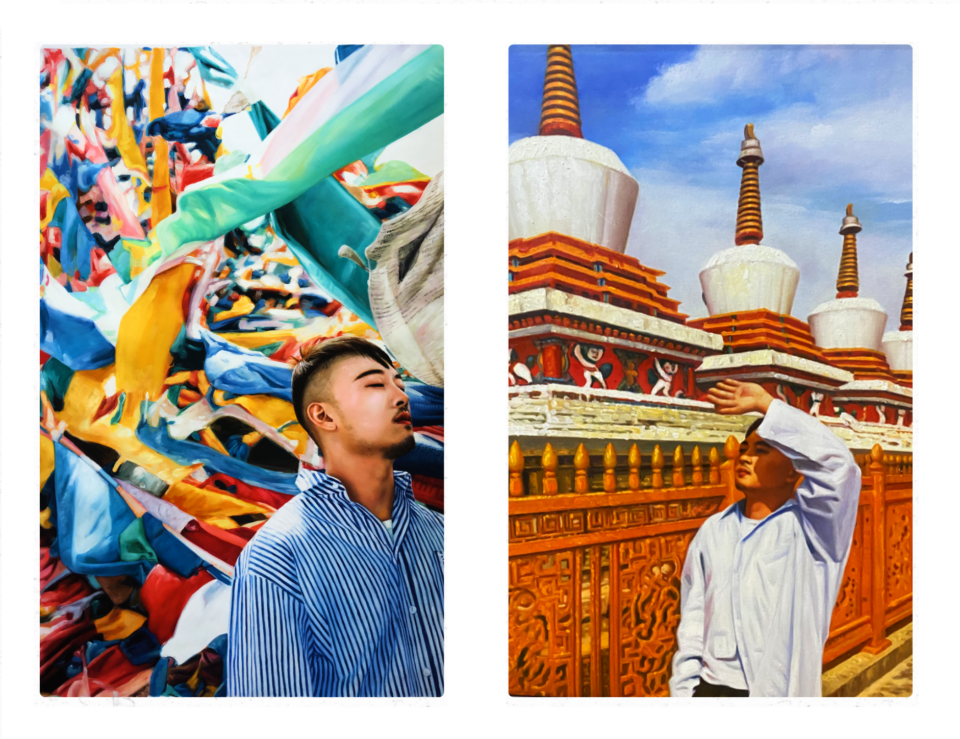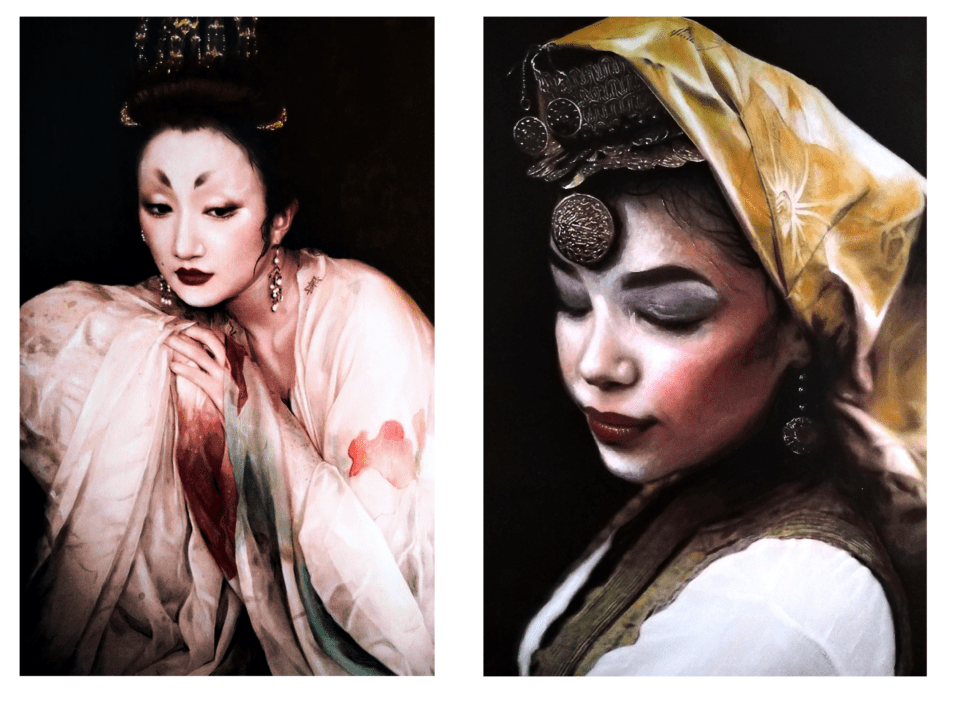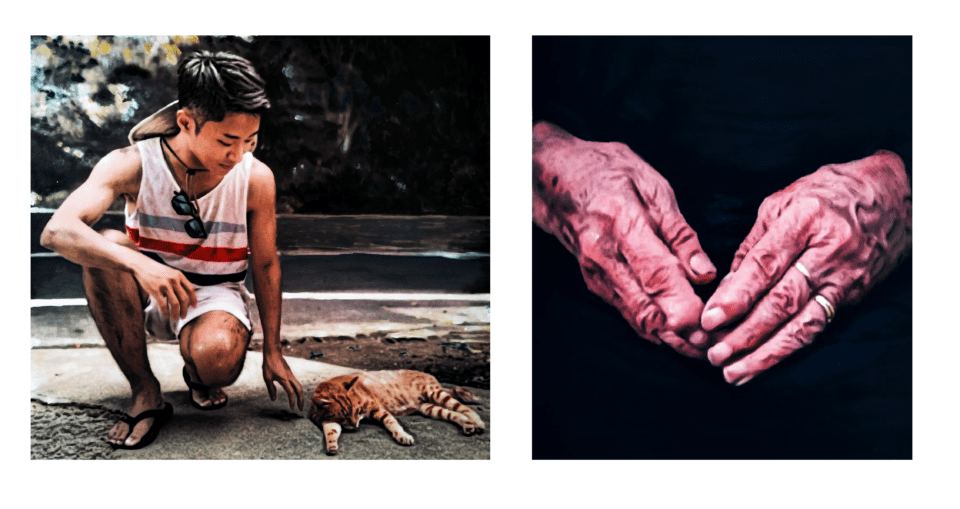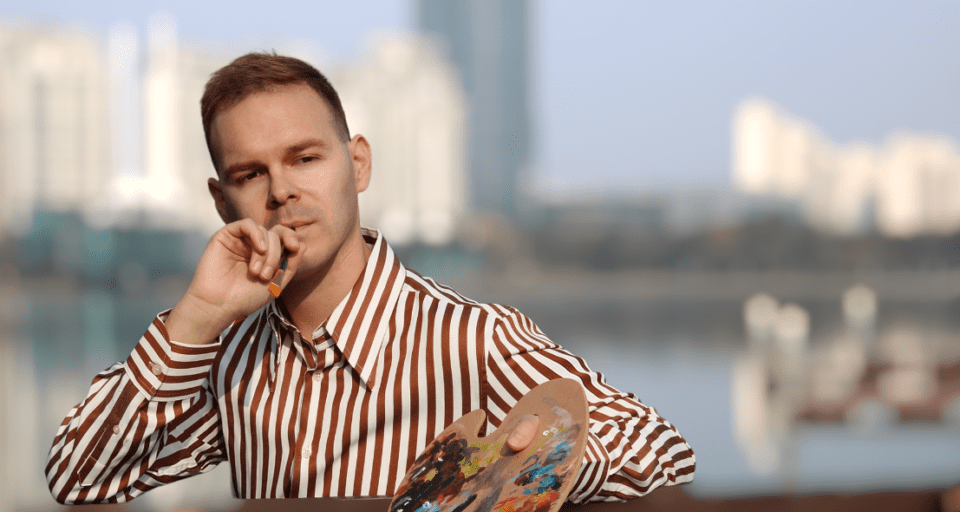Serbia-born Iliya Fonlamov Francisković is a figurative painter, predominantly inspired by the belief that human beings and the world in which we live are the most beautiful creations, whilst art exists to preserve beauty in its original form. The artist successfully manipulates colours and details, presenting them more or less realistically. The painting as whole does not change its meaning – it remains a thought-provoking window into the beauty of an ordinary moment.
A: You are a figurative painter, predominantly inspired by the belief that human beings and the world in which we live are the most beautiful creations, whilst art exists to preserve beauty in its original form. Why do you think this?
IFF: I believe that the answer to this very inspiring question lies in the pattern that I have adopted throughout my twenty six years of life. Not too much, but enough to help me form the direction in which I create my art.
If we turn around we have the opportunity to see forms, beautiful shapes, beautiful landscapes and beautiful people in all their imperfection, someone would say. We often manipulate the term “perfection” – we strongly believe that we have never experienced such a thing or that we’ll never have such chance. But it is actually all around us. An episode from my childhood could explain it better: I grew up in my parents’ place where the walls were equally decorated with beautiful still life paintings in the manner of realism, as well as with abstract paintings of human figures and landscapes. Those forms of vegetables and fruit, traditional clay, the way their shadows were somehow playing over the canvas actually fascinated me.
Nowadays, I think that those works defined me as figurative painter somehow. I was impressed by the way in which something seemingly ordinary can become a piece of art. That personal feeling of art long time ago has become my lens to experience everything around me as a creation given by God, by nature to wait its own moment to be captured by artist in whatever medium.
A: What do you mean by “preserving beauty in its original form” and what drives you to preserve it?
IFF: When I say that, I actually point the literal message that the phrase carries, just the way it is said. All people have got some talent. We are talented to speak languages, to manipulate sound, to sing, to make others happy, secure, to perform sports in an outstanding way; my gift is ability to paint, I’d say. When I combine my talent with my personal understanding of art that I’ve already explained, we get exactly that – desire to paint what I see, what surrounds me, exactly as it already is.
I think there are at least two reasons that drive me to preserve beauty in its original form, as you say. The first one is the thing that I constantly find something in my environment that fascinates me, as it repeats from day to day out. Another reason is actually the fact that I’ve never officially trained my talent or received any formal art education, therefore I think I’ m just creating the art based on “beauty in its original form” previously mentioned. But today I don’t consider it my disadvantage.

A: What is it about the medium of painting that you believe allows you to best express your figurative works
IFF: I think it is definitely oil painting. I can manipulate the layers, I can change, I have enough room and time to notice details, to experience colours, to experiment and finally to learn. I try to learn from all the mistakes that potentially occurred during the work process.
A: How does colour and the use of detail bring a figurative painting to life?
IFF: By creating an illusion of course. A mosaic of tiny or a bit large moves of paintbrush let’s say, contrasts in colour that sometimes can’t be noticeable for a naked eye. This is how we get a structure of details that only has the meaning when viewed as a whole – that is a moment when it becomes an image.
This actually pretty often makes magicians out of figurative painters magicians, especially hyperrealists. They create “a mirror” in which the form is preserved forever. This is the reason why sometimes they are not perceived as “real artists”. This medium is no different from a photograph, for example, in terms of the message it sends. The method of painting that I practice is only needs to be understood. Before we offer our art to the audience we certainly experience or feel the phenomena that inspire us in a certain way. Realistic painting in my case is only the way of how I would express my “experience or feeling”.
A: Who are the people that you depict on your work – are they real people whom you have met or are they a composite of various people?
IFF: This question makes me very happy. The answer to this question will help you to understand how I see my work in the future. Referring to the previous questions and replies, it’s easy to conclude that my environment influences my work. Some people who appear in my opus are indeed people I’ve met and felt in certain artistic way.
Recently I am becoming quite confident when it comes to my work. I am aware that I can present a good quality hyperrealistic scene. My vision is to make several series of paintings in years to come that will potentially include people from my surrounding that I want to present on canvas, even models and photographers who will be able to feel what I want as a final outcome. I’d like that art to be the result of high production, which will rival modern photography – while actually being a painting. Currently, there are not many artists who approach art in that way.

A: To what extent does an actual location inform your work?
IFF: If you analyse my work, it is clear that the answer is: evidently and greatly. For me personally, a new environment brings new motivation. In my case, the actual location represents the most necessary component for work. My arrival in Shanghai, for example, brought me a whole sea of inspiration that comes from elements that were somewhat a bit exotic to me up until then.
This doesn’t mean that my inspiration has stopped having motives from Serbia or Europe as its source. My potential future opus just has become larger and more diverse even before it is created. This is especially clear when we know that my greatest inspiration is: a human, a person.
A: How does a person, in the context of their location, inspire you?
IFF: For me, as an artist who sees himself in realism, a person is a combination of the exterior, which is evidently unique, which comes from the native area of the person him or herself, and the interior, which shines from the painting if the artist knows how to adequately transfer it to the canvas. I believe that can only happen if the artist feels what you call “a location”. I think it could take years to develop such feelings, but that’s what we see in the paintings of great masters like El Greco, Vermeer, etc.
When Caravaggio paints The Calling of Saint Matthew, for instance, although he thinks of an episode from the New Testament, he actually convinces us that he feels people, space and time in Rome from the very beginning of the 17th century, and this is what makes the painting capable of saying “a thousand words” in every single moment you approach it. Similar to that, just now I am beginning to feel Asia and that’s why the motive of a local person is dominant in my current work.
A: How do works such as Tools and Lockpad express the beauty of an ordinary moment? How is the process of creating these paintings different from Prayer, for example?
IFF: This brings us back to my answer to the very first question. Certainly, the processes of creation of these paintings are very different. The message I wanted to send is also different, my emotions as well. Namely, I will be honest that paintings such as Lockpad or Tools were painted to show my skills, to show my possibilities and the depth I can reach in portraying a given moment and form as realistically as possible.
These works are directly inspired by the artwork of John Whalley whom I see as a role model in domain of still life that his work mostly presents. The painting Prayer and all others that belong to the same series are something completely different. You will notice that they are not done in typical manner of realism. Somehow they are my “field trip” into the domain where I do the details with freer movements, where the colour is stronger, and the composition is not realistic at first view, but it does become so as you keep observing.

A: What are your current inspirations?
IFF: As I really like human anatomy, which is closely related to my vocation, I find my current inspiration in the Asian feature. All the subsequent works I plan are inspired by it as well. For months already, I’m working on a series of paintings entitled The Birth of Adam which will be exhibited in Tokyo this summer. It is the first series of paintings of mine that I would characterise as high production.
The photographs based on which I am painting are taken by photographer Alex CYC, while the model was Charlie Ning, from Taiwan. This series is also, I dare say, somehow revolutionary. It can be viewed from two perspectives. The first as a modern scene, typical for contemporary photography. Another perspective is given within the title of the series. A typical depiction from the Old Testament, which appears in countless works by Christian authors of the European Middle Age and the Renaissance, but now presented in a completely different way. The main role is given to a non-Caucasian model that we are not really used to imagine when we say Adam. I wish my works to give the chance to change our perspective, the truth is not only what we are used to. Art gives the opportunity for it to be comprehensive.

A: What projects and exhibitions do you have coming up throughout 2023?
IFF: In June, I will have the opportunity to exhibit the series of paintings The Birth of Adam in Japan at the Tokyo International Art Fair 2023. In November, the series of paintings Prayer will represent Serbia at International Industries EXPO and Shanghai International Art Fair that is traditionally held at National Exhibition and Convention Center, one of the world’s biggest venues.
fonlamov.com I Instagram: @fonlamov
All images courtesy of Iliya Fonlamov Francisković.
The work of Iliya Fonlamov Francisković appears in the Artists’ Directory in Issue 111 of Aesthetica. Click here to visit our online shop.





